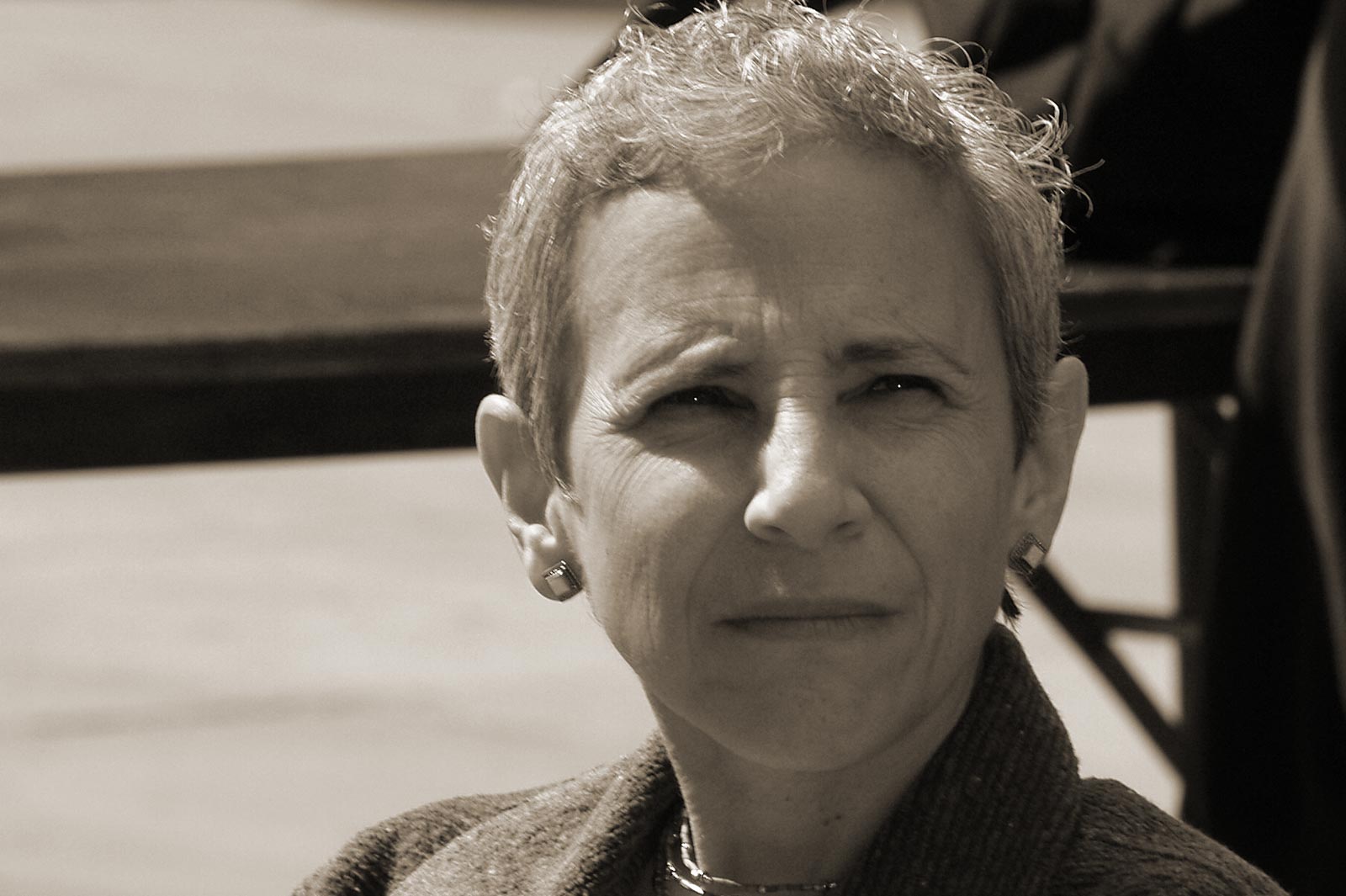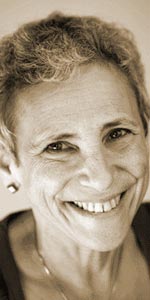
Showcase Episode: 20 Minutes with Gail Carson Levine
Workshop Episode: Workshop Episode 4
Website: http://www.gailcarsonlevine.com/
Blog: http://gailcarsonlevine.blogspot.com/
Bio
I grew up in upper Manhattan, Washington Heights to be exact, a hilly, pretty neighborhood. My family lived across the street from P.S. 173, my elementary school, and from a park where I used to climb what my friends and I called the “danger” rocks, which were part of the palisades that overlook the Hudson River. Going up, clinging to cracks with my fingertips, terrified, I’d think, “If I live, I will never do this again.” When I reached the top I’d work my way down and start over just as frightened as before.
From third grade through high school I wrote stories and poems, and a few of my poems were published in an anthology of student writing, but I never thought of becoming a writer. The authors of most of my favorite childhood books were dead (Mark Twain, L.M. Montgomery, Louisa May Alcott, Anna Sewell). I knew a few artists because my dad owned a commercial art studio, and I saw actors in the movies and on stage, but I didn’t think of writing as work that any modern person did.
In college—first Antioch College in Yellow Springs, Ohio, then City College of New York (Phi Beta Kappa, not that I’m bragging)—I majored in Philosophy, a useless major for a future writer. Philosophers use winding, twisty, endless sentences and words like posit, predicate, epistemology, ontology. Don’t get me wrong. Writers need to have enormous vocabularies, and I never met a word I didn’t love, but we use our arsenal judiciously. We don’t go all sesquipedalian at the drop of a hat.
And in college I met and married my husband David, who is a very witty man. He’s been giving me humor lessons ever since! He’s also a fine jazz pianist, a gifted photographer, and a general high-tech whiz. You can see him, comfortable behind a camera, below, and you can see more of his photographs at www.dmlevine.com.
After college, I worked for New York State government, mostly in jobs that had to do with welfare. My favorite time was the first part of my career when I helped people find work. How satisfying that was!
Meanwhile, I did my first bit of writing for children. In the 1970’s I wrote the script for a musical called Spacenapped. David wrote the music and lyrics, and it was performed by The Heights Players, a community theater in Brooklyn. But I still didn’t think of myself as a writer. I read novels constantly, as I always had, and one day while I was meditating I asked myself why, since I adored stories, I never made up any. That was the beginning of The King’s Cure, an art appreciation book for kids. I wrote it and drew pencil illustrations of birds and used reproductions of famous art for the illustrations—and no one would publish it—but I became hooked on writing. I took writing classes and joined critique groups and The Society of Children’s Book Writers and Illustrators (find it online at www.scbwi.org, a great organization). And I collected rejection letters for nine years until an editor wanted the manuscript for Ella Enchanted. You know the rest.
Some of Gail’s Works…
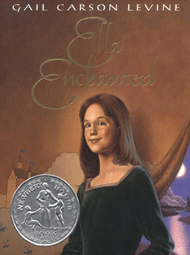
You may know that Ella Enchanted was my first published book after ten years of trying. I wrote it because I love fairy tales and I’d just read Beauty by Robin McKinley, which I admired enormously. (You should read it if you haven’t already.) I was starting a new writing class and needed an idea, so I thought maybe I could expand a fairy tale too. “Cinderella” is such an important tale, it’s the first one I thought of. But when I considered it, I realized I didn’t like Cinderella or understand her. She’s so disgustingly good! And why does she take orders from her horrible stepmother and stepsisters? |
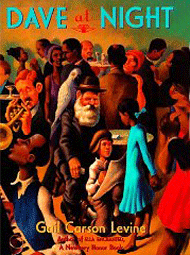
Dave at Night may be my favorite of my books because it’s connected to my father.His name was Dave, and he was an orphan. I don’t know how old he was when he was sent to the Hebrew Orphan Asylum, but he may have been as young as six, and he stayed until he was sixteen. I always knew my father had been an orphan, but he would never talk about it. Once, I showed him a photograph of the asylum in a book of historic photographs of New York City. He said, “Yup, that’s it,” and walked away. From that, I knew life there must have been bad. |
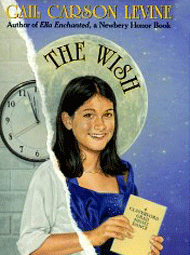
The Wish is about popularity and unpopularity in the eighth grade. My worst year popularity-wise was tenth grade. Every day I walked from the New York City subway station to school and back again – alone in the midst of crowds of friends. This trauma is in the book, true to life.[read more on Gail’s website…] |
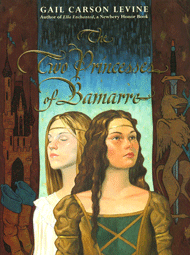 Bamarre is plagued by monsters!There are dragons and ogres and gryphons and specters, oh my! And a dread disease, the Gray Death. How could I write about such awful things?I didn’t mean to! I meant to retell “The Twelve Dancing Princesses,” a magical fairy tale with forests of silver, gold, and diamonds, a castle across a lake, the twelve enchanted princes. But I couldn’t figure out the puzzles: why the king locks his daughters in at night; what spell is on the princes; and most of all, why the princesses allow several men to die.[read more on Gail’s website…] Bamarre is plagued by monsters!There are dragons and ogres and gryphons and specters, oh my! And a dread disease, the Gray Death. How could I write about such awful things?I didn’t mean to! I meant to retell “The Twelve Dancing Princesses,” a magical fairy tale with forests of silver, gold, and diamonds, a castle across a lake, the twelve enchanted princes. But I couldn’t figure out the puzzles: why the king locks his daughters in at night; what spell is on the princes; and most of all, why the princesses allow several men to die.[read more on Gail’s website…] |
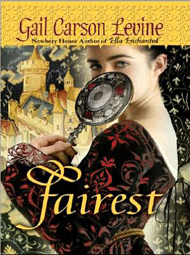 My editor asked me to write another book in Ella’s world, and the more I thought, the more I felt the new one should be a fairy tale too.To me, the next biggie after “Cinderella” is “Snow White.”I reread the story, this time struck by the queen’s wishes for her unborn baby’s appearance. Shouldn’t she be hoping for health rather than beauty? And who wants skin as white as snow, lips as red as blood, hair as black as ebony? Hideous. Ah. There’s a book in that.[read more on Gail’s website…] My editor asked me to write another book in Ella’s world, and the more I thought, the more I felt the new one should be a fairy tale too.To me, the next biggie after “Cinderella” is “Snow White.”I reread the story, this time struck by the queen’s wishes for her unborn baby’s appearance. Shouldn’t she be hoping for health rather than beauty? And who wants skin as white as snow, lips as red as blood, hair as black as ebony? Hideous. Ah. There’s a book in that.[read more on Gail’s website…] |
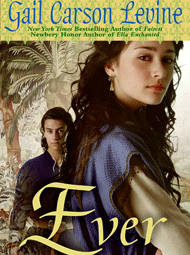 Ever can teach you to write numbers in cuneiform, the first known writing system in the world.Writing began in ancient Mesopotamia, and Ever takes place in a fantasy version of that time and place. Cuneiform appears in the chapter headings, so you can copy the numbers up to sixty-nine, since there is no Chapter 70.The Mesopotamians were marvelous mathematicians. Our sixty seconds in a minute and sixty minutes in an hour originated with them. They were good plumbers too. Their sewage systems surpassed anything in medieval Europe thousands of years later. But medicine was not so good, which plays into the plot of Ever.[read more on Gail’s website…] Ever can teach you to write numbers in cuneiform, the first known writing system in the world.Writing began in ancient Mesopotamia, and Ever takes place in a fantasy version of that time and place. Cuneiform appears in the chapter headings, so you can copy the numbers up to sixty-nine, since there is no Chapter 70.The Mesopotamians were marvelous mathematicians. Our sixty seconds in a minute and sixty minutes in an hour originated with them. They were good plumbers too. Their sewage systems surpassed anything in medieval Europe thousands of years later. But medicine was not so good, which plays into the plot of Ever.[read more on Gail’s website…] |
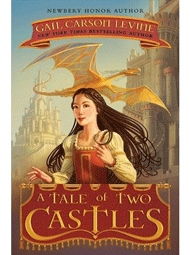 A Tale of Two Castles is my first mystery.Naturally, it comes from a fairy tale, very loosely from “Puss ‘N Boots,” one of the most charming fairy tales. I’m utterly won over that a cat threatens a bunch of peasants with cutting them up as herbs for the soup and they’re scared. A cat against people?I’m not sure anyone will get the connection between my book and the original, but look for it. Here’s how I began: I was searching for a fairy tale mystery, and I realized it is one.[read more on Gail’s website…]NOTE: Gail is current working on a sequel to this marvelous tale! A Tale of Two Castles is my first mystery.Naturally, it comes from a fairy tale, very loosely from “Puss ‘N Boots,” one of the most charming fairy tales. I’m utterly won over that a cat threatens a bunch of peasants with cutting them up as herbs for the soup and they’re scared. A cat against people?I’m not sure anyone will get the connection between my book and the original, but look for it. Here’s how I began: I was searching for a fairy tale mystery, and I realized it is one.[read more on Gail’s website…]NOTE: Gail is current working on a sequel to this marvelous tale! |

